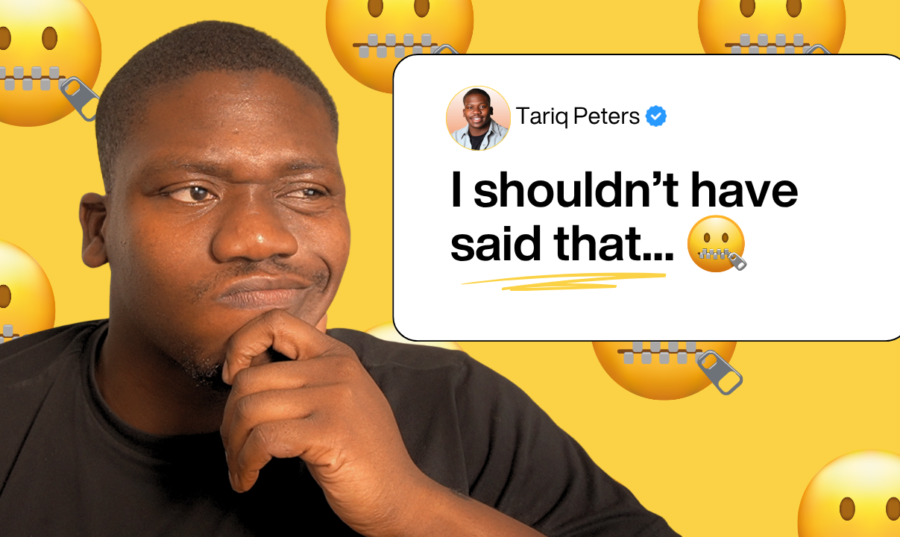As you may have heard me mention many times, telling your story is one of the most powerful ways to build a personal brand. It creates connection, trust and authenticity. However, many professionals still hold back because they are afraid of oversharing or sounding too personal online.
Honestly, the hesitation makes sense. Putting yourself out there and building a public profile can leave you open to scrutiny, trolls or online harassment.
When I spoke to Nicola Millington, Founder of FP Comms and Author of “SWIPE”, she put it perfectly: “The fear of backlash is not irrational, it’s a rational response to a digital landscape where visibility and vulnerability often collide. But here’s the counterintuitive truth: the risks of silence often outweigh the risks of scrutiny.”
The line between powerful storytelling and uncomfortable exposure can feel blurry. So how do you share your journey without crossing into territory that feels too raw, too much information, too soon?
Keep reading to learn how to strike that balance.
Start With Purpose
First things first, before you begin to share anything, ask yourself why you are telling the story. What message are you trying to deliver? What do you want your audience to take away from it?
Storytelling should serve a purpose to inform, educate or entertain (or in some cases all three). If the story only serves you, it may feel like a random online rant. But if it serves the audience you’re trying to connect with, it becomes a tool for connection.
Always lead with intention. Remember: you control the narrative. What you choose to share and how you share it begins and ends with you.
Keep It Rooted in Your Values and Core Pillars
When you’re sharing your story, clarity comes from alignment. Before you post, reflect on your core values and the pillars that define your personal brand. Whether it’s leadership, resilience, creativity, community, or something else entirely.
These foundations act as a filter, helping you decide what to share, what to hold back and how to frame your experiences in a way that feels purposeful.
For me, the key areas I focus on are storytelling, empowerment, visibility and impact, especially when it comes to helping purpose-led experts and founders use PR and personal branding to build powerful, authentic personal brands.
That lens helps me stay grounded in what I share and ensures my content always ties back to a deeper message.
Your audience doesn’t need every detail of your life, they just need the meaningful details that reflect who you are and what you stand for. The more your content is anchored in your values, the less likely it is to feel like oversharing and the more likely it is to inspire connection and credibility.
If you’re ever unsure about whether something is “too much” ask yourself: Does this reflect the message I want to be known for? Does it serve or support one of my core pillars? If the answer’s yes, you’re most likely on the right track.
You Control the Details
Sharing your story does not mean you owe people a full insight into your personal diary. You get to choose the details, the tone and the timing. The best stories give enough context to make it real, without revealing everything.
You’re allowed to keep parts of your journey private. You’re also allowed to evolve. As you grow, your perspective may shift and so can the way you tell your story. That’s not inconsistency, that’s growth.
Understanding the platforms that you can use best based on what you would like to share can also be beneficial. E.g. you may want to use newsletters to wear your heart on your sleeve for a dedicated audience as opposed to platforms like X (formerly Twitter), which can often feel chaotic or hostile.
Speak From the Scar, Not the Wound
One helpful rule that improved my confidence in putting out content without feeling I’m oversharing was a lesson reiterated by my mentor: “speak from the scar, not the wound”. Share stories you have processed, not ones you are still healing from. If something is too fresh, it may not be the right time to share it publicly.
When you speak from the scar, you are in a better position to reflect, offer well-rounded insights and hold the narrative with care. When you speak from the wound, it can feel more reactive than intentional, which usually leads to elements of sharing content you wouldn’t necessarily want people to know.
That does not mean you should only share the highlight reel. But it does mean thinking about whether you are sharing to serve or to seek comfort.
Moving Forward
You do not have to expose your deepest struggles to tell a meaningful story. You just need to share with intention, honesty and purpose. Your story can be powerful and personal without being too overbearing with information.
The goal is not to be vulnerable for the sake of it. The goal is to be real in a way that creates a connection. That is what builds a brand people trust.
See you next week!




[…] to when my freelance journey started on the day I went skydiving. AI could write about that moment. But it can’t express the fear, the adrenaline or the clarity that came mid-air. That’s the part only I can tell. And that’s what people connect with. The lived experience AI […]
[…] myself I’d stop living scared. Since then, I’ve rebuilt from scratch, sharing the stories I used to hide. Now I help founders do the same: find their voice, own their story and build brands that cut […]